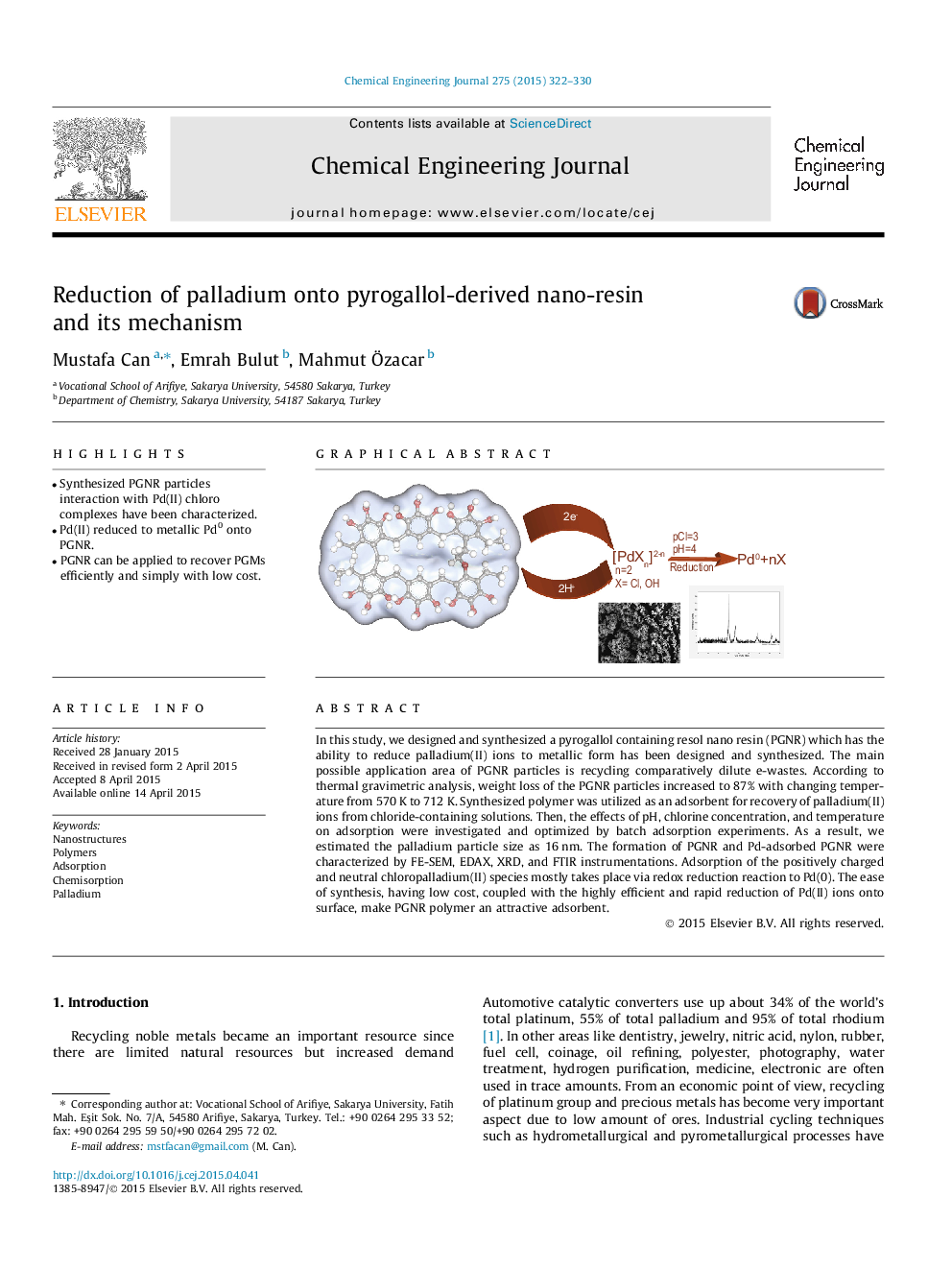| Article ID | Journal | Published Year | Pages | File Type |
|---|---|---|---|---|
| 146270 | Chemical Engineering Journal | 2015 | 9 Pages |
•Synthesized PGNR particles interaction with Pd(II) chloro complexes have been characterized.•Pd(II) reduced to metallic Pd0 onto PGNR.•PGNR can be applied to recover PGMs efficiently and simply with low cost.
In this study, we designed and synthesized a pyrogallol containing resol nano resin (PGNR) which has the ability to reduce palladium(II) ions to metallic form has been designed and synthesized. The main possible application area of PGNR particles is recycling comparatively dilute e-wastes. According to thermal gravimetric analysis, weight loss of the PGNR particles increased to 87% with changing temperature from 570 K to 712 K. Synthesized polymer was utilized as an adsorbent for recovery of palladium(II) ions from chloride-containing solutions. Then, the effects of pH, chlorine concentration, and temperature on adsorption were investigated and optimized by batch adsorption experiments. As a result, we estimated the palladium particle size as 16 nm. The formation of PGNR and Pd-adsorbed PGNR were characterized by FE-SEM, EDAX, XRD, and FTIR instrumentations. Adsorption of the positively charged and neutral chloropalladium(II) species mostly takes place via redox reduction reaction to Pd(0). The ease of synthesis, having low cost, coupled with the highly efficient and rapid reduction of Pd(II) ions onto surface, make PGNR polymer an attractive adsorbent.
Graphical abstractFigure optionsDownload full-size imageDownload as PowerPoint slide
